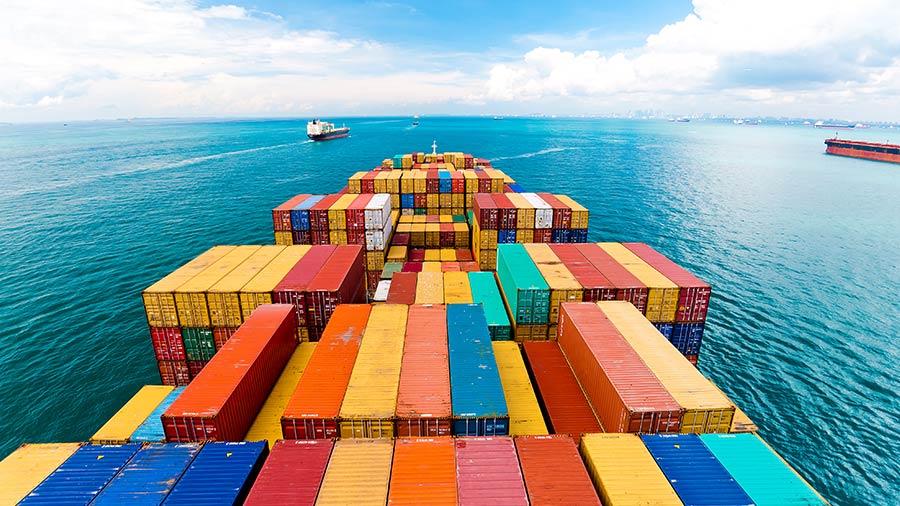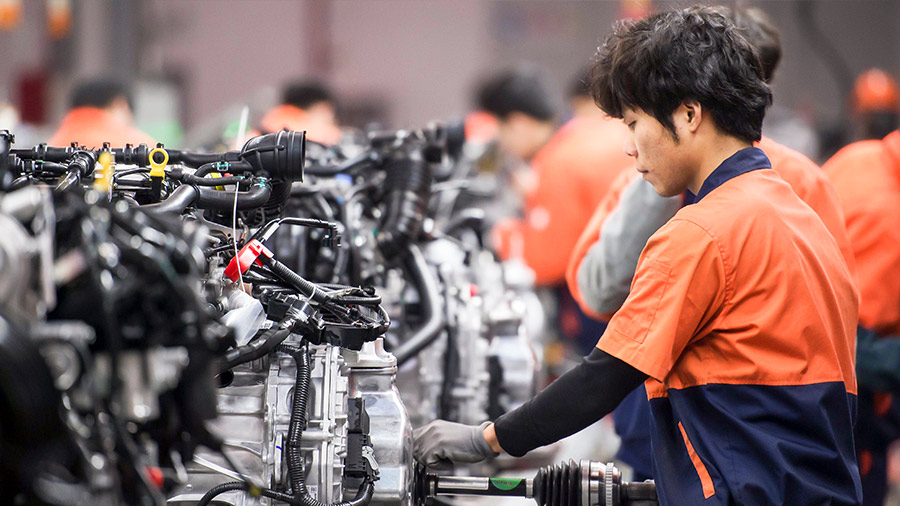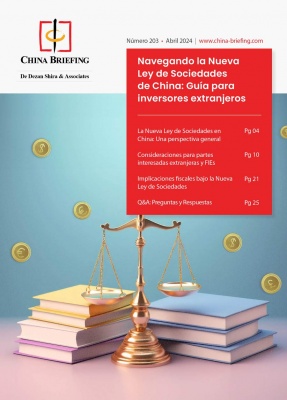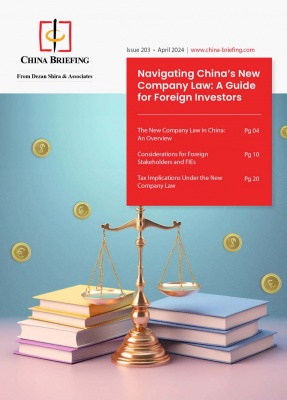Post VAT Reform: Determining China’s Taxation on Mixed and Composite Sales
By: Dezan Shira & Associates
Editor: Jake Liddle
Since China’s business tax to VAT reform was fully implemented earlier this year, the issue of determining applicable tax rates for ‘mixed’ and ‘composite’ sales has been further clarified. However, the country’s VAT system uses many differing tax rates that impacts these two types of sales. For example, if a company sells and installs fire safety equipment, is the transaction taxed by the VAT rate on sale of goods, or sale of service? In this article, we explore how to determine the correct tax rate.
Mixed sales
Simply put, a sale that involves both goods and services in order to produce one product is defined as a ‘mixed’ sale. For example, a fire safety equipment manufacturer sells equipment to a client, and, at the same time, provides an installment service for the sold equipment. According to China’s Circular on the Pilot Reform of the Business Tax on Value-Added Tax (Cai Shui [2016] No. 36), “units engaged in the production, wholesale or retail of goods and individual industrial and commercial traders” are subject to an applicable goods sales VAT rate of 17 percent, or 13 percent as set for certain goods. Other units and individual businesses’ mixed sales are subject to applicable service VAT rates, which differ.
However, the law does not explicitly provide criteria for the term “to engage in the production of goods, wholesale or retail of goods”, which can prove problematic when trying to clearly identify the scope of business of a company, and therefore its correct tax rates. Previously, the Notice of cancellation of certain VAT regulatory documents and catalogues (Cai Shui [2009] No. 17) stated that “production, wholesale or retail of goods” implies that an entity is mainly engaged in taxable labor services, meaning that annual goods sales account for more than 50 percent of annual sales volume and non-VAT taxable services, while non-VAT taxable services turnover doesn’t. However, this law has now been declared invalid, resulting in there now being no uniform standard with which to officially determine operations that constitute engagement in the production of goods, wholesale or retail. Furthermore, provincial tax bureau standards regarding this matter are inconsistent.
The main way of determining relevant tax methods is by correctly identifying the “main business scope” of an enterprise. This can be done in two ways. First, the scope of business as detailed in an enterprise’s business license can be checked. Scope of business and relevant taxation becomes apparent if sales of goods or sales of services are specified in the scope of business. Second, the proportion of sales revenue of annual income can be used as an indication. If revenue derived from sales of goods is more than 50 percent of yearly income, then it should be taxed according to the goods sales VAT rate. If revenue derived from sales of services is more than 50 percent of yearly income, then it should be taxed according to the service sales VAT rate.
 RELATED: Tax and Compliance Services from Dezan Shira & Associates
RELATED: Tax and Compliance Services from Dezan Shira & Associates
Composite sales
If an entity is selling goods or providing labor services that are subject to VAT, while also engaging in unrelated taxable labor services, then this is classed as a ‘composite’ sale. Where sales amounts are subject to different tax rates, they are to be accounted separately. If not accounted separately, the higher tax rate will apply. When determining whether sales are composite, sales of goods are subject to the 17 percent VAT rate, and sales of labor are subject to the labor sales VAT rate. Composite sales have two distinct situations:
- Within one sales transaction, there are two or more differing taxable services or goods. For example, an enterprise with design and construction qualifications and a contractor sign a contract agreement in which design services are held at six percent and construction services at 11 percent, taxed separately.
- There are two or more sales transactions. For instance, an equipment producer with sales and installment qualifications and an equipment purchaser sign a sales contract. However, only sales conduct occurs and fees are not collected for installment services. The equipment producer provides the purchaser installment of another manufacturer’s equipment, signs an installment contract, and as a consequence, the equipment producer must pay VAT according to the corresponding rates.
That is to say, if two services are not separately calculated, they must be taxed according to the higher VAT rate.
Differences
Both mixed sales and composite sales are similar in that they both have sales of goods and services in common. The main difference is that mixed sales involves both sales of goods and sales of services in one transaction, and the transaction sold is directly linked to the good sold. Composite sales sell two or more services or goods, but are not directly related. In practice, determining if a sales transaction is singular or double generally depends on how a contract is signed. If a contract specifies the price of the goods and services sold, it is also recognized as a sales contract and is considered a mixed sale.
James Zheng, Senior Tax Specialist at Dezan Shira & Associates, comments: “The contractual relationship between two entities is the foundation of all business activities, and potential tax implications are too important to be ignored before signing a contract. From the taxation situations presented in this article, foreign investors may have an insight into how complex China’s VAT system is. Without careful planning, higher tax obligations can easily be incurred. Contract review from a tax perspective must be careful considered, as must China’s fapiao system, as it is an important factor in determining the contractual relationship between two entities. Some types of fapiao are strictly monitored by the government, and in some cases, may only be issued by separate applications to local tax authorities. In the worst case scenario, failure of issuing appropriate fapiao could stop the implementation of a contract.”
|
Asia Briefing Ltd. is a subsidiary of Dezan Shira & Associates. Dezan Shira is a specialist foreign direct investment practice, providing corporate establishment, business advisory, tax advisory and compliance, accounting, payroll, due diligence and financial review services to multinationals investing in China, Hong Kong, India, Vietnam, Singapore and the rest of ASEAN. For further information, please email china@dezshira.com or visit www.dezshira.com. Stay up to date with the latest business and investment trends in Asia by subscribing to our complimentary update service featuring news, commentary and regulatory insight.
|

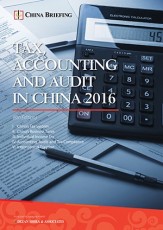 Tax, Accounting, and Audit in China 2016
Tax, Accounting, and Audit in China 2016
This edition of Tax, Accounting, and Audit in China, updated for 2016, offers a comprehensive overview of the major taxes that foreign investors are likely to encounter when establishing or operating a business in China, as well as other tax-relevant obligations. This concise, detailed, yet pragmatic guide is ideal for CFOs, compliance officers and heads of accounting who must navigate the complex tax and accounting landscape in China in order to effectively manage and strategically plan their China-based operations.
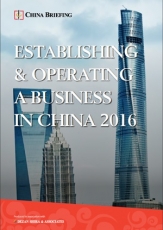 Establishing & Operating a Business in China 2016
Establishing & Operating a Business in China 2016
Establishing & Operating a Business in China 2016, produced in collaboration with the experts at Dezan Shira & Associates, explores the establishment procedures and related considerations of the Representative Office (RO), and two types of Limited Liability Companies: the Wholly Foreign-owned Enterprise (WFOE) and the Sino-foreign Joint Venture (JV). The guide also includes issues specific to Hong Kong and Singapore holding companies, and details how foreign investors can close a foreign-invested enterprise smoothly in China.
 An Introduction to Doing Business in China 2016
An Introduction to Doing Business in China 2016
Doing Business in China 2016 is designed to introduce the fundamentals of investing in China. Compiled by the professionals at Dezan Shira & Associates in June 2016, this comprehensive guide is ideal not only for businesses looking to enter the Chinese market, but also for companies who already have a presence here and want to keep up-to-date with the most recent and relevant policy changes.
- Previous Article Outsourcing Payroll and HR Management: Q&A with Adam Livermore
- Next Article China & Russia Propose Vast Eurasian Free Trade Zone & SCO Development Bank
